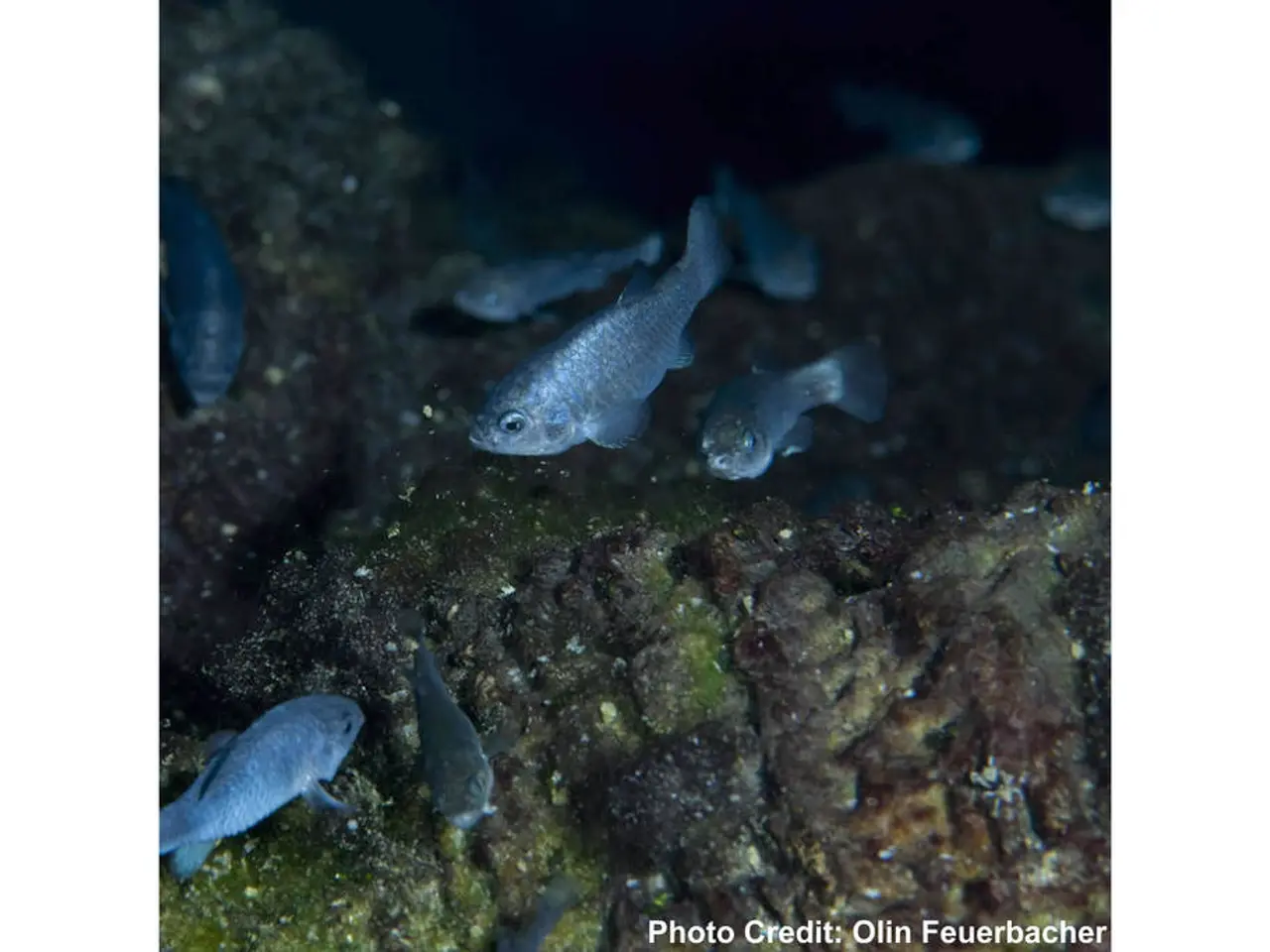Cavefish Study: Vision Costs 15% More Energy
A Swedish research team, led by Magnus Sundström, has shed light on the costly nature of vision in the Mexican blind cavefish, Astyanax mexicanus. Published in September 2021, their findings may explain eye loss in other cave-dwelling creatures.
The study, the first to directly test the expensive tissue hypothesis, revealed that maintaining sight in young cavefish consumes 15% more energy than if they were blind. This high energy demand is due to photoreceptive cells and neurons in the eye. In low food and oxygen environments, natural selection favours individuals with reduced visual capacity, leading to eye loss over generations. Additionally, genetic mutations and pleiotropy, where genes have multiple functions, contribute to this phenomenon. Notably, blind cavefish have a significantly smaller midbrain, the part of the brain responsible for processing visual information.
The Lund University team's discovery underscores the significant energy cost of maintaining vision in low-resource environments. This understanding may help explain eye loss in other cave-dwelling species and offers insights into the evolutionary pressures driving such adaptations.
Read also:
- Is it advisable to utilize your personal health insurance in a publicly-funded medical facility?
- Dietary strategies for IBS elimination: Aims and execution methods
- Benefits, suitable dosage, and safety considerations for utilizing pumpkin seed oil in treating an overactive bladder
- Harmful Medical Remedies: A Misguided Approach to Healing




